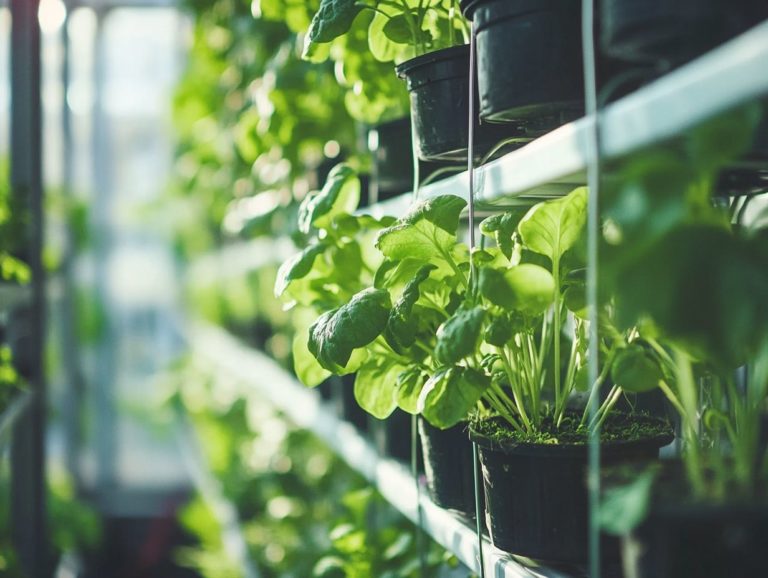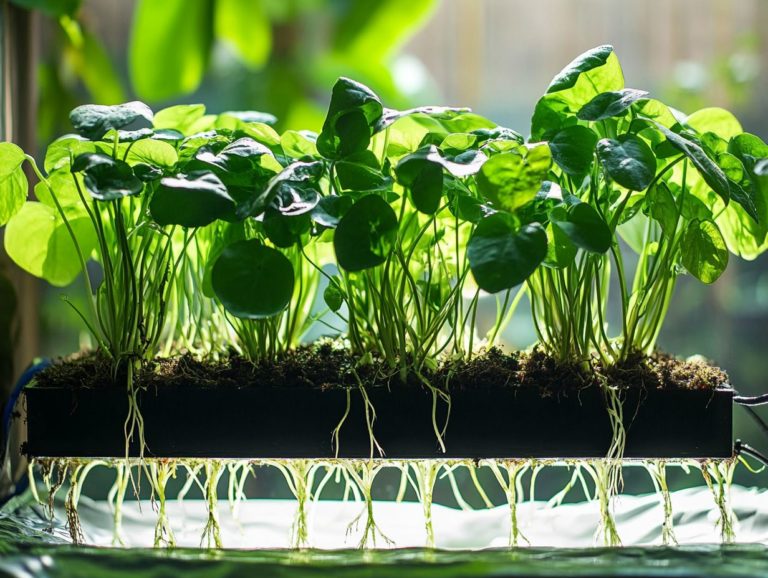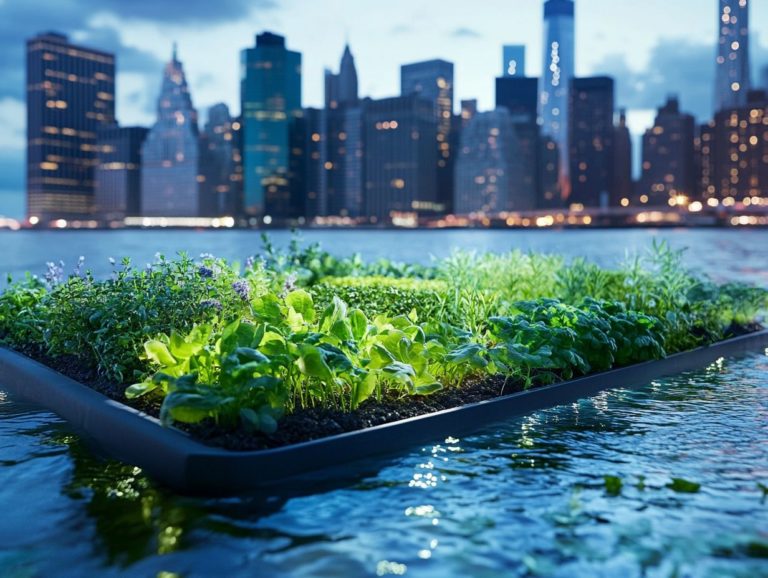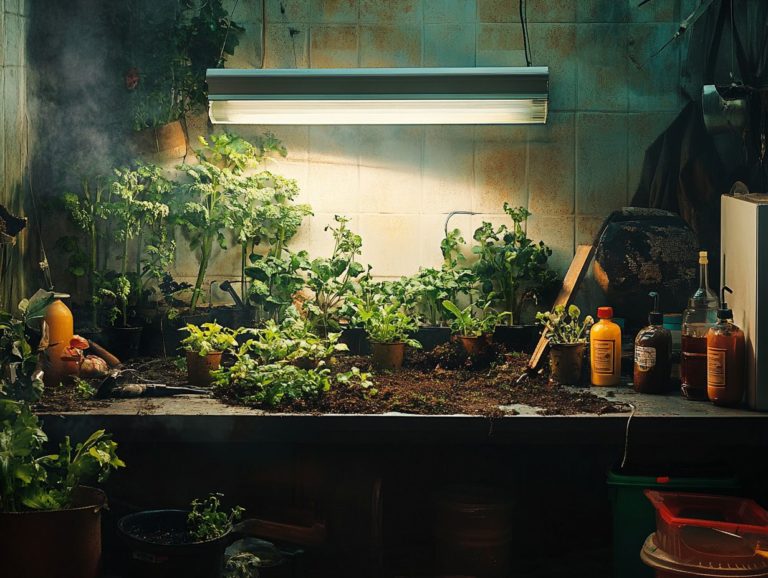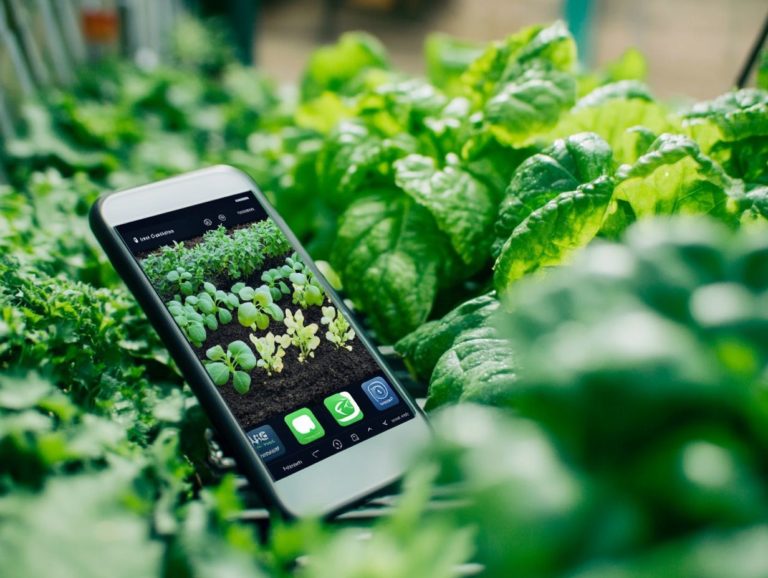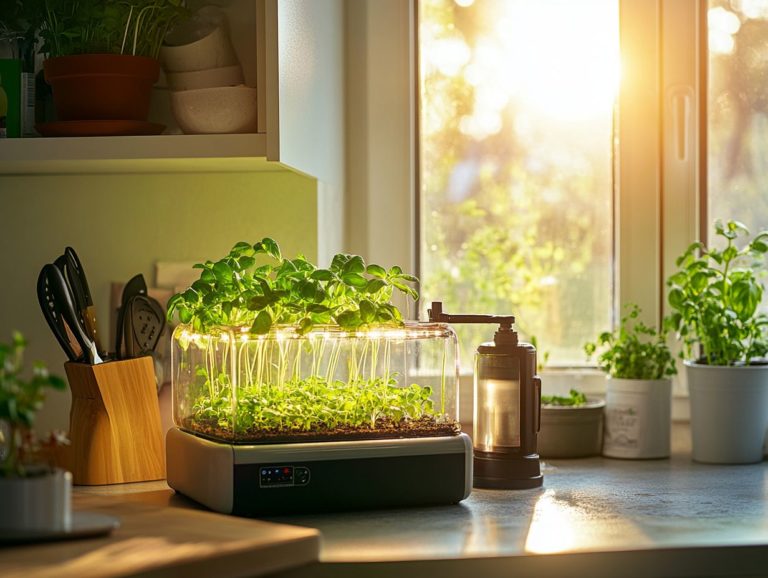How to Troubleshoot Common Hydroponics Issues?
Hydroponic systems present innovative avenues for growing plants without soil. However, they also introduce a unique set of challenges.
This article delves into the common issues you may encounter in hydroponics. It guides you in identifying and grasping these complexities.
With effective troubleshooting techniques at your disposal, you’ll be well-equipped to tackle these challenges. You’ll also find insightful tips for maintaining a healthy system to avert future setbacks.
Moreover, alternative hydroponic methods will also be covered.
Whether you re just starting or you re a seasoned grower, this guide is designed specifically for you!
Contents
- Key Takeaways:
- Common Issues in Hydroponics
- Troubleshooting Techniques
- Preventing Future Problems
- Alternative Solutions
- Frequently Asked Questions
- How to Troubleshoot Common Hydroponics Issues?
- What do I do if my plants are turning yellow?
- Why are my plants wilting?
- What causes algae growth in my hydroponic system?
- How do I deal with pests in my hydroponic system?
- What should I do if my plants are not growing?
- Why are my plants showing signs of nutrient burn?
Key Takeaways:
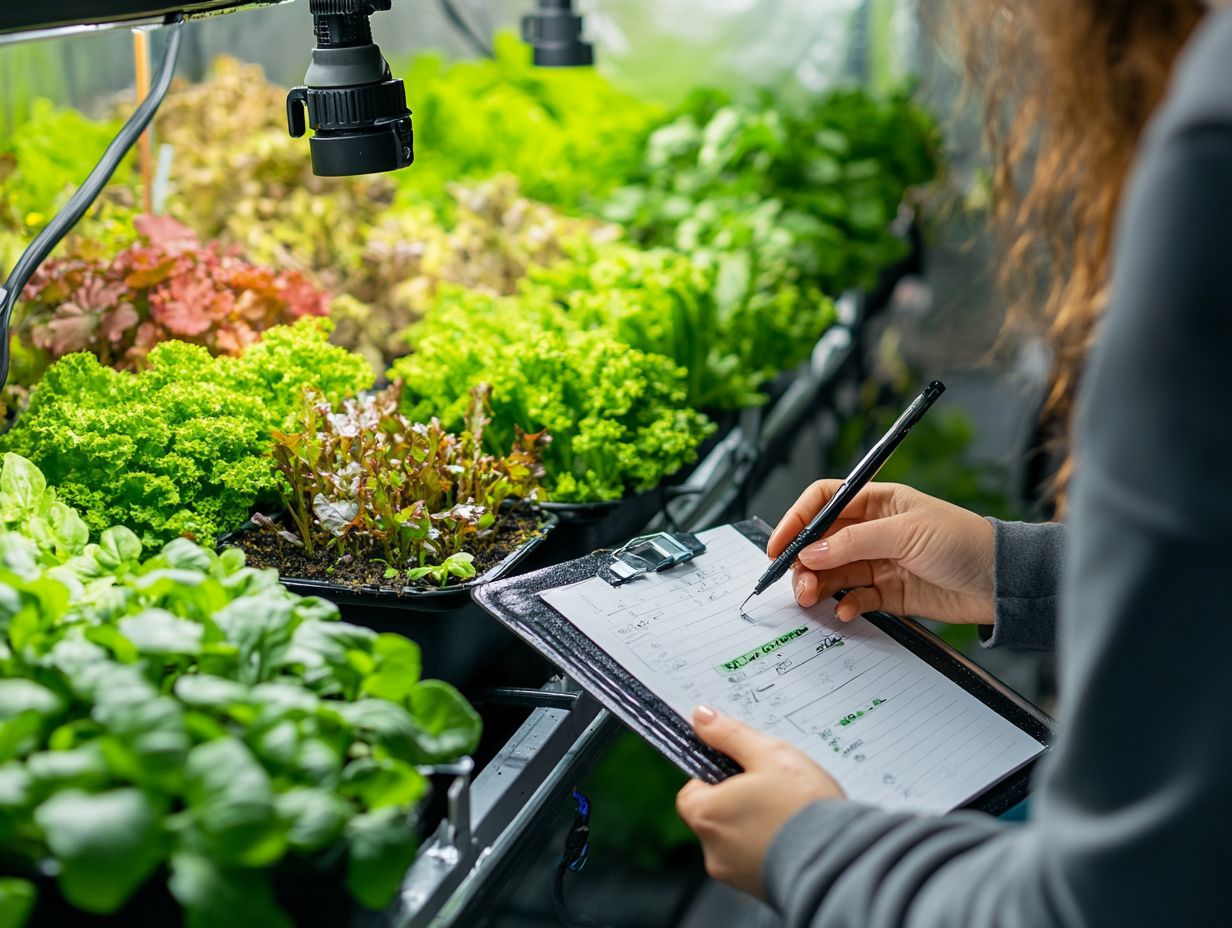
- Regularly check your hydroponic system for signs of issues such as wilting plants or changes in water levels. Early detection is key to preventing further damage.
- Start troubleshooting with the basics, like checking nutrient levels and pH balance. Adjust these to address common hydroponic issues.
- Maintain a healthy system by regularly cleaning and sanitizing equipment, monitoring nutrient levels, and ensuring proper air circulation. Prevention helps avoid future problems.
What Are Hydroponic Systems?
Hydroponic systems provide a groundbreaking approach to agriculture. They enable you to cultivate plants without the need for soil.
Instead, you ll rely on a nutrient solution that delivers all essential elements for growth. This method enhances water efficiency and maintains optimal pH levels.
Additionally, hydroponics can significantly boost crop yields compared to traditional farming techniques. You gain control over light exposure and air circulation, both vital for robust root development.
Various types of hydroponic systems cater to your specific growing needs. For instance, some systems use a method that employs a thin layer of nutrient solution to nourish plant roots, while others immerse roots in oxygen-rich nutrient tanks.
These systems often incorporate grow mediums like clay pellets or rock wool. These not only anchor your plants but also assist in moisture retention, enhancing nutrient absorption.
Such elements contribute to the overall resilience of your plants. This makes hydroponic gardening appealing for those aiming for sustainable, high-yield crops with reduced water usage.
Common Issues in Hydroponics
Even with its many advantages, hydroponics presents its own set of challenges. You might deal with issues like chlorosis, which indicates nutrient deficiencies, or root rot from overwatering.
Algae growth can also create complications in the nutrient solution, affecting the overall health of your plants. Understanding these issues is crucial for effective navigation.
This knowledge allows for better pest control and helps maintain optimal humidity levels and temperature regulation, ensuring robust plant development.
Identifying and Understanding Problems
Identifying issues in hydroponics is essential for optimal plant growth. Symptoms like chlorosis often signal nutrient imbalances or deficiencies.
Root diseases can arise from unfavorable pH levels and environmental stressors, which significantly impede plant development and crop yield. Regularly monitor factors like light intensity, temperature, and humidity.
Also check pH levels and electrical conductivity of your nutrient solutions. Accurate assessments aid in diagnosing potential risks and implementing effective corrective measures.
By keeping a vigilant eye on these parameters, you mitigate problems related to plant diseases like root rot and nutrient lockout. This ultimately enhances nutrient uptake, nurturing healthier crops.
Don’t let these issues catch you off guard! Start your hydroponic journey today and ensure your plants thrive by learning how to troubleshoot hydroponic system failures.
Troubleshooting Techniques
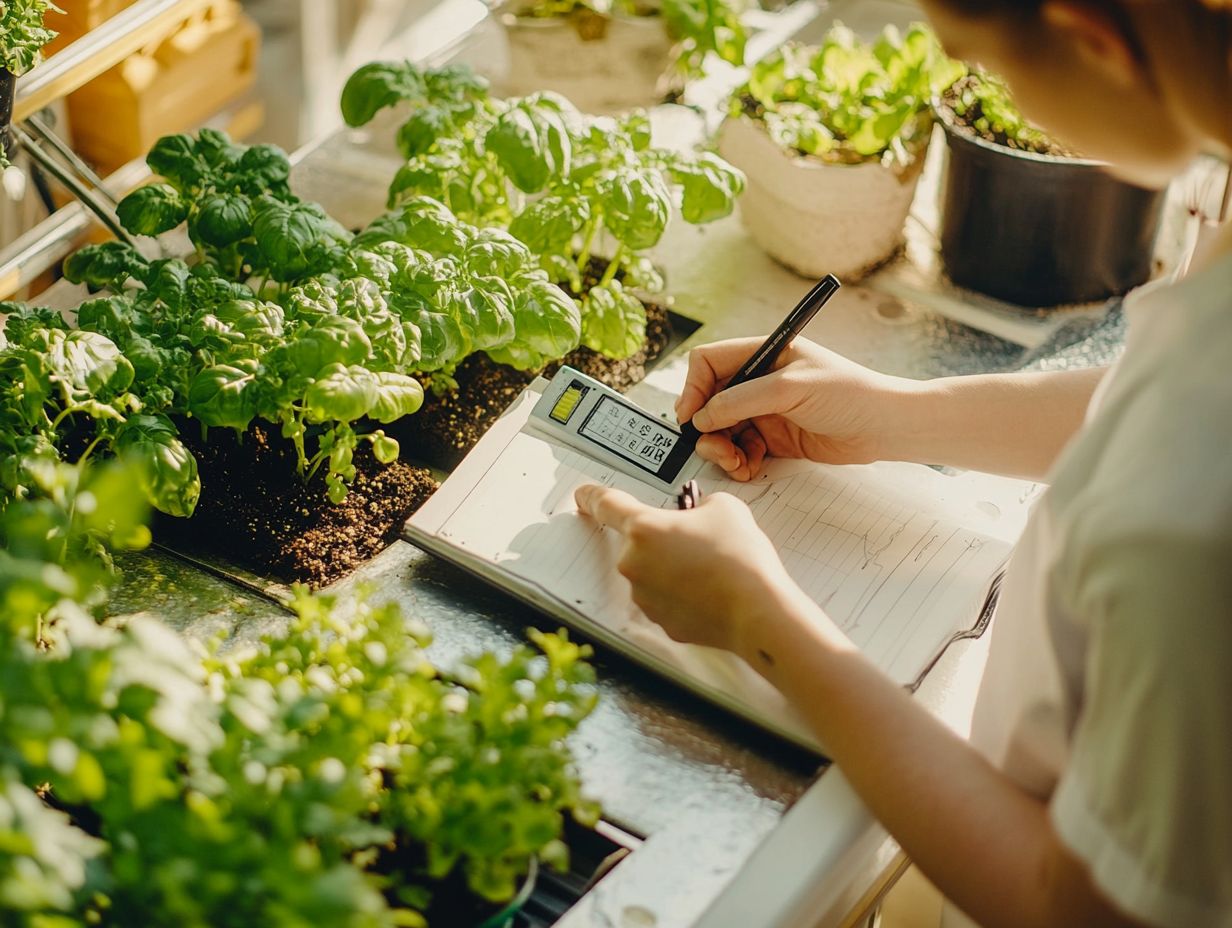
Troubleshooting techniques are essential for maintaining hydroponic systems. As a grower, it’s crucial for you to implement effective maintenance strategies to prevent issues like nutrient lockout, which is when plants can’t absorb the nutrients they need, and inadequate air circulation.
Manage light levels and control temperatures to significantly enhance plant health. Using the right cleaning solutions will help minimize the risk of algae growth and pest infestations. To further support your efforts, consider identifying common hydroponic system issues, ensuring your hydroponic setup thrives.
Steps to Address Common Issues
To effectively tackle common issues in hydroponics, establish a systematic cleaning procedure for the nutrient solution. Regularly check air pumps to ensure proper ventilation; both are essential for root health and disease prevention.
Implement pest control measures to safeguard your plants from external threats that could compromise growth. Begin with a thorough inspection of the nutrient solution. Identifying any signs of contamination or nutrient imbalance is crucial for enhancing nutrient absorption and cultivating a healthier environment for your plant roots.
Next, focus on ensuring optimal air quality through regular maintenance of your air pumps. This practice will help combat humidity issues and promote gas exchange, both vital for your plants’ vigor.
Incorporating periodic cleaning techniques throughout your system will prevent algae buildup and pathogens. This makes your hydroponic setup more efficient and sustainable in the long run.
Preventing Future Problems
To prevent future challenges in hydroponics, engage in regular checks on your system and make timely adjustments to maintain optimal conditions for your plants’ health and growth.
Employ effective strategies for algae prevention and carefully manage humidity levels. These actions can enhance nutrient uptake and support strong root development, effectively safeguarding your system against potential issues.
Tips for Maintaining a Healthy Hydroponic System
Keep your hydroponic system thriving with a few simple practices! Regularly check your light exposure and air circulation to optimize water quality and cultivate robust plant growth.
Employ an effective cleaning method for your equipment and nutrient tanks to prevent the buildup of harmful substances. This ensures a pristine growing environment.
To elevate your system’s efficiency, monitor pH and nutrient levels regularly, as imbalances can significantly impact plant health. Installing timers for your lighting helps establish an optimal day/night cycle for your crops.
Keep a close watch on temperature and humidity levels; drastic fluctuations can stress your plants. Implementing a solid pest management plan is essential to protect against infestations that could threaten growth.
Engaging in periodic system audits allows you to pinpoint areas for improvement, ensuring your hydroponic setup remains both productive and sustainable. For more detailed guidance, refer to understanding hydroponic system maintenance.
Alternative Solutions
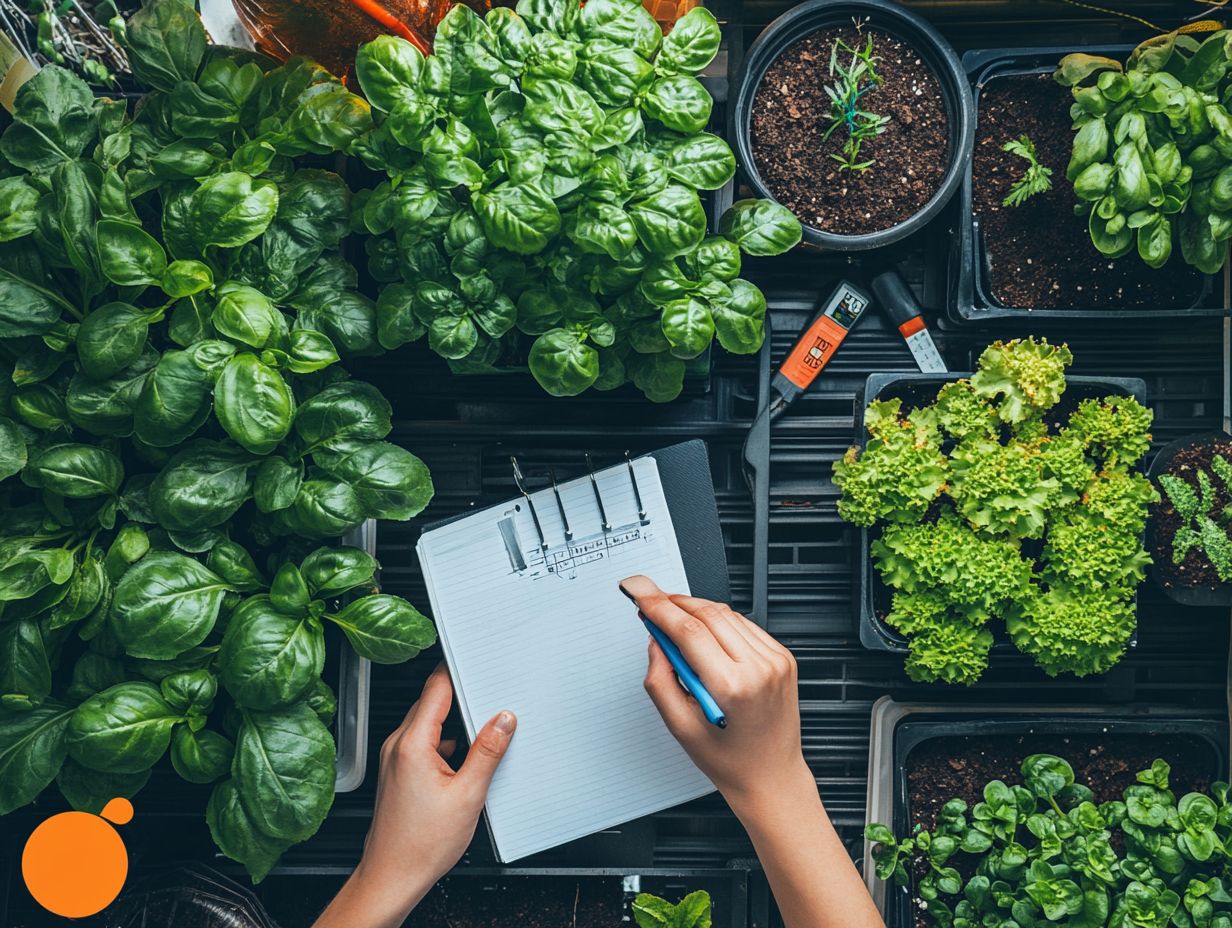
Exploring alternative solutions in hydroponic gardening opens up a realm of innovative approaches. These can significantly boost your crop yield and foster optimal flower development, all while promoting healthy plant genetics.
These alternative methods offer you the flexibility to manage nutrient solutions effectively and adapt seamlessly to various growing environments.
Start implementing these tips today and watch your plants flourish!
Exploring Different Hydroponic Methods
Exploring hydroponic methods unlocks exciting possibilities. Systems like Nutrient Film Technique (NFT), Deep Water Culture (DWC), and aeroponics each have unique benefits for growers.
Vertical farming has also gained popularity. It efficiently uses space and creates controlled environments that help plants thrive.
Each system has its characteristics. For example, NFT is loved for its water efficiency and continuous nutrient delivery.
However, you might face challenges like root disease in certain conditions. In contrast, DWC flourishes in oxygen-rich environments and is great for fast-growing crops.
It does require careful monitoring to maintain water quality. On the other hand, aeroponics uses very little water and promotes rapid plant growth.
It can be trickier to manage than traditional methods. By understanding these various systems, you can choose the best fit for your crop needs and goals.
Frequently Asked Questions
How to Troubleshoot Common Hydroponics Issues?
Hydroponics is a great way to grow plants, like an herb garden, but challenges can arise. Here are some FAQs to help you troubleshoot common issues.
What do I do if my plants are turning yellow?
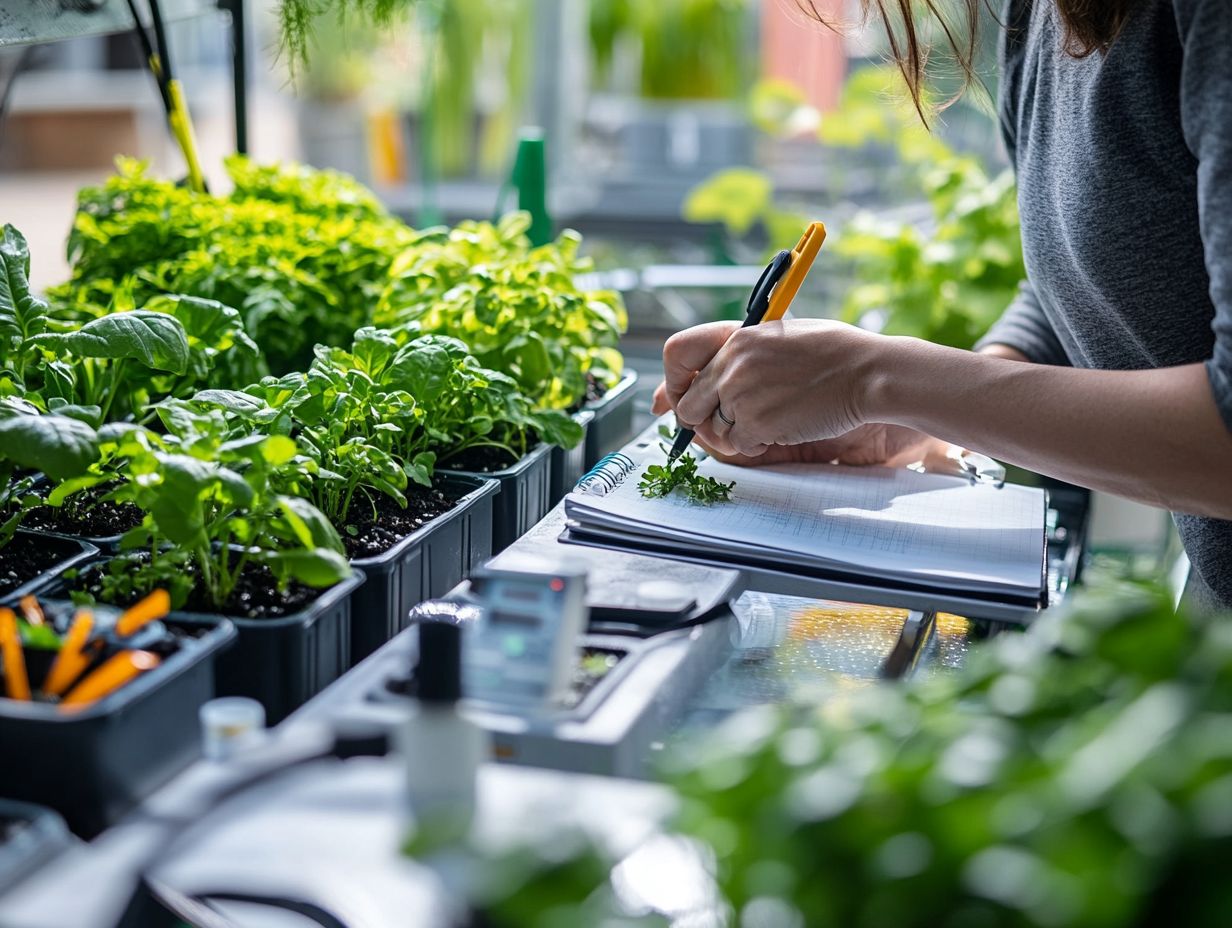
If your plants turn yellow, they may lack nutrients. Check the pH levels of your nutrient solution.
Ensure it’s within the right range and adjust the nutrient levels for balance.
Why are my plants wilting?
Wilting can indicate overwatering or underwatering. If roots are too wet, they may drown and rot.
On the flip side, dry roots can t absorb water and nutrients. Check the moisture levels and adjust accordingly.
What causes algae growth in my hydroponic system?
Algae growth is common and often due to excess nutrients, light, or heat. To prevent it, maintain nutrient levels and limit light exposure.
Keep your growing area cool to help combat algae.
How do I deal with pests in my hydroponic system?
Pests can be a real hassle. Regularly clean your system to keep pests away.
You can also introduce beneficial insects or use organic pest control methods.
What should I do if my plants are not growing?
If your plants aren t growing, they might lack oxygen. Check your aeration system to ensure it s working properly.
You might need to boost oxygen levels by adding an air stone or increasing aeration time.
Why are my plants showing signs of nutrient burn?
Nutrient burn happens when plants get too many nutrients, causing yellow or brown leaves. Follow recommended nutrient levels and flush your system regularly.
Adjust your feeding schedule to avoid this issue.

